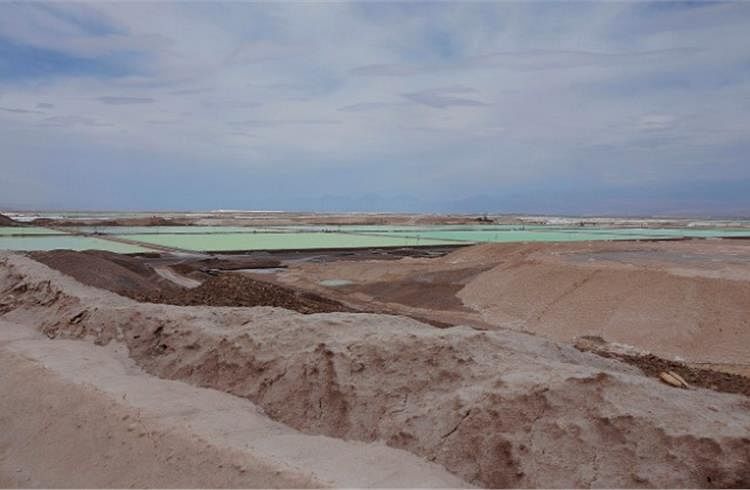Rules of the Road: Regulatory changes we saw in 2023
As 2023 draws to a close, we bring you the major policy decisions that took place this year in the auto sector.
The year 2023 has seen a tapestry of government-led regulatory updates on the road to make transport safer, cleaner, and more efficient. From the enforcement of stringent emission norms and launching indigenous safety ratings to the construction of more sumptuous roads, cautioning diesel vehicle manufacturers, and slashing subsidies for electric two-wheelers, there are many such brushstrokes on the canvas of 2023.
The new regulations will have a significant impact on making the country’s automotive landscape a more mature one. New changes often come with challenges, especially in terms of cost, in a market where demand is susceptible to price fluctuations. But automakers and consumers have partnered in the progress.
The foundation of the automotive industry is getting reshaped on the ride to decarbonisation with the gradual adoption of electric vehicles and ambitious targets for biofuels. Compliance and awareness require automakers and consumers to closely monitor the evolving regulations. In this piece, Autocar Professional talks about some of the major updates from the Centre in the automotive industry.
BS VI Phase II regulations
The BS VI norms, enacted in April 2020, tightened emission regulations for vehicles. Automakers had to equip the vehicles with advanced technologies like particulate filters and SCR systems to reduce nitrogen oxide emissions substantially.
On April 1, 2023, the Centre enforced the second phase of BS6, which focuses on Real Driving Emission (RDE) norms. The norm requires vehicles to meet emission targets in real-world conditions, apart from the lab test on the Modified Indian Test Cycle. The norms reduce the gap between emissions during lab tests and real-world driving emissions as vehicles are subjected to broad speed ranges when they are tested on a real-time basis
on roads.
The implementation of RDE norms resulted in vehicle price increases as manufacturers incurred higher costs in upgrading and equipping cars with hardware such as on-board diagnostics systems. Automakers also stopped production of some diesel models following the new norms, on account of higher compliance costs, end-of-life cycle, and weak sales.
Indigenous safety ratings
 In a bid to put more safe cars on the road, the Ministry of Road Transport and Highways rolled out the much-awaited Bharat New Car Assessment Programme (BNCAP) on October 1. It is an indigenous star-rating system for voluntary crash-testing cars under which vehicles are rated from one to five stars based on safety in a collision test. The higher the number of stars, the safer the car.
In a bid to put more safe cars on the road, the Ministry of Road Transport and Highways rolled out the much-awaited Bharat New Car Assessment Programme (BNCAP) on October 1. It is an indigenous star-rating system for voluntary crash-testing cars under which vehicles are rated from one to five stars based on safety in a collision test. The higher the number of stars, the safer the car.
Bharat NCAP tests align with the latest Global NCAP protocols, as most of the testing procedures and standards are similar. New standards will provide a metric for comparing the crashworthiness of a car while helping consumers make informed purchases and pushing manufacturers to build safer cars. “It will help the Indian consumer make an informed decision while buying a new car, as well as open a huge opportunity for exporting high-quality, made-in-India cars,” Nitin Gadkari said while launching the programme.
However, the government decided not to make it mandatory for carmakers to fit six airbags in a car. Earlier, the government had issued a draft notification to mandate six airbags for cars that carry up to eight passengers from October 1. “We have introduced the BNCAP protocols which demand six airbags for a 4- or 5-star rating. So, there is no need to mandate six airbags in cars now. It will automatically push OEMs to offer them,” Gadkari said.
Subsidy for electric vehicles
 The Faster Adoption and Manufacturing of (Hybrid &) Electric Vehicles (FAME) in India scheme, which was initially introduced in 2015, under the Ministry of Heavy Industries, has been one of the major drivers of electric vehicle adoption in the country through demand subsidies.
The Faster Adoption and Manufacturing of (Hybrid &) Electric Vehicles (FAME) in India scheme, which was initially introduced in 2015, under the Ministry of Heavy Industries, has been one of the major drivers of electric vehicle adoption in the country through demand subsidies.
The government rolled out the second phase of the FAME scheme in 2019 with a target to support one million electric two-wheelers, 5,00,000 electric three-wheelers, 55,000 electric four-wheelers and 7,000 electric buses. FAME II came with a budgetary outlay of Rs 10,000 crore, compared to a Rs 895 crore outlay for the first phase.
In June, the government slashed the subsidy for electric two-wheelers under the FAME II scheme by around 33 percent to Rs 10,000 per kWh and reduced the cap on incentives for two-wheelers to 15 percent of the ex-factory price of vehicles from 40 percent.
Monthly retail sales of e2ws, which peaked at around 1,05,000 units in May, hit a speed bump after the cut in subsidy, as manufacturers increased prices by 10-25 percent. Sales crashed to 45,700 units in June following the reduction in subsidy. However, the sales recovered in the recent months amid the festival season demand.
Recent data from the Ministry of Heavy Industries showed that over 1.15 million electric vehicles have been sold under the FAME II scheme, claiming subsidies totalling Rs 5,228 crore. The scheme subsidised approximately 1.02 million electric two-wheelers, 1,21,374 electric three-wheelers, 14,818 electric four-wheelers, and 3,487 electric buses.
The FAME II scheme was initially rolled for a period of three years ending in 2022 but was extended to March 2024. The government has not given any update on what happens to the subsidies once the scheme expires.
Earlier in the year, the government approved a new scheme worth Rs 57,613 crore to deploy 10,000 electric buses in 169 cities over a decade through a public-private partnership model. There are also reports saying India is planning to deploy 50,000 electric buses by 2027 with the help of a joint finance mechanism with the US, which will see a USD 390 million fund as a guarantee for manufacturers seeking loans to expand production.
Several original equipment manufacturers (OEMs)have been on the back foot when it comes to participating in the government’s electric bus tenders. This is mainly because of uncertainty over financial returns from state transport operators, where there is a possibility of payment delays or defaults. Banks have been reluctant to finance e-bus projects, which involve state transport operators, over concerns about the recovery of dues.
Lithium reserve discovery
 In February, the Geological Survey of India found lithium reserves in the country for the first time. Lithium inferred resources of 5.9 million tonnes were established in the Salal-Haimana area of Reasi District of Jammu and Kashmir.
In February, the Geological Survey of India found lithium reserves in the country for the first time. Lithium inferred resources of 5.9 million tonnes were established in the Salal-Haimana area of Reasi District of Jammu and Kashmir.
Lithium is a major component in lithium-ion cells that are used in electric vehicles and everyday electronic devices and battery storage systems. India is currently 100 percent reliant on imports for its lithium demand, which results in higher costs for batteries.
Lithium in India can boost the domestic production of batteries and reduce the cost substantially. Batteries are the cost drivers when it comes to electric vehicles, and cheaper batteries can reduce the cost of vehicles.
The government started the auction process of 20 blocks of critical minerals, including lithium ore, for mining lease and composite license on November 29. The lithium ores are being auctioned for the composite license, which is a two-stage operating right granted to mining companies for further exploration followed by production. The auction is expected to be completed by January 22.
In what could be another boost for the electric vehicle industry, India is likely to start manufacturing advanced chemistry cell batteries by January 2024 under the Centre’s production-linked incentive scheme (PLI) for domestic advanced chemistry cell manufacturing facilities.
The government awarded 30GWh capacity to Ola Cell Technologies, ACC Energy Storage and Reliance New Energy Battery Storage as part of the scheme.
Gadkari’s diesel-warning
 The Minister of Road, Transport and Highways Nitin Gadkari surprised the industry at the annual convention of the Society of Indian Automobile Manufacturers in September, with a comment that he would request the finance minister to impose an additional 10 percent tax on diesel vehicles if they do not transition to eco-friendly fuels.
The Minister of Road, Transport and Highways Nitin Gadkari surprised the industry at the annual convention of the Society of Indian Automobile Manufacturers in September, with a comment that he would request the finance minister to impose an additional 10 percent tax on diesel vehicles if they do not transition to eco-friendly fuels.
But he was quick to clarify on the same day that there was no such proposal currently under active consideration. He also reaffirmed that there is no such proposal during the winter session of parliament in December.
However, Gadkari’s initial comments on additional tax, together with the recommendation from a panel formed by the Ministry of Petroleum and Natural Gas to impose a ban sale of diesel-powered four-wheel vehicles in cities with populations of more than one million from 2027, sent a strong message to the automotive industry to fasten the transition to cleaner fuels.
India, being the third largest automotive market in the world, has considerable sales of vehicles powered by diesel engines.
The share of diesel cars in the passenger vehicle segment has reduced to around 18 percent of the sales, while diesel variants continue to contribute a significant part of commercial vehicle sales. Diesel accounts for about two-fifths of India's overall refined fuel consumption and close to 80 percent of the diesel consumed in the country is used in the transport sector.
Gadkari’s initial comments on additional tax, fuelled concerns and uncertainty among automakers and consumers on the future of diesel engines. The concerns among investors were also reflected in the stock market, as shares of major automakers selling diesel vehicles fell sharply that day after the minister’s statement.
Bio fuels
 Earlier this month, the Centre announced plans to mandate the blending of compressed biogas in compressed natural gas (CNG) for transport in a phased manner from the financial year 2025-26.
Earlier this month, the Centre announced plans to mandate the blending of compressed biogas in compressed natural gas (CNG) for transport in a phased manner from the financial year 2025-26.
A target of five percent blending from 2028-29 has been recommended. The government sees this as an opportunity to substitute imported liquefied natural gas and reduce carbon emissions. Blending in total CNG consumption should be one percent in 2025-26 while the blending has to be increased to three percent and four percent in 2026-27 and 2027-28 respectively, the petroleum ministry said recently.
CNG is a cleaner and more efficient fuel than gasoline and is the second most popular fuel for passenger cars and light commercial vehicles in India. Biogas, which consists mainly of methane and carbon dioxide, is produced from organic matter, such as food or animal waste, municipal solid waste and sewage treatment plant waste.
It has the potential to replace natural gas with similar composition and energy potential. Biogas has to be purified and upgraded to at least 95 percent methane by volume to be used as vehicle fuel. Recently, India’s largest passenger vehicle maker Maruti Suzuki showcased a variant of the Wagon R with an engine powered by compressed biogas. Meanwhile, the government has already mandated ethanol blending in petrol, with a target of 20 percent ethanol blending by 2025-26.
Way forward
2024 could be another transformative period for the automotive industry. Anticipated announcements regarding subsidies for electric vehicles and any shifts in the government's stance on import duties of fully built electric cars are just a glimpse of the pivotal developments expected to shape the industry landscape going forward.
This feature was first published in Autocar Professional's December 15, 2023 issue.
RELATED ARTICLES
Bharat Forge and Agile Robots Sign MoU for AI-Driven Industrial Automation
Indo-German partnership to develop robotic solutions for automotive, healthcare, and consumer electronics sectors.
BMW Plans to Double MINI Sales With 10 New Models by 2026
BMW India CEO positions MINI as BMW’s lifestyle growth driver in India, aiming to double sales and broaden its emotional...
BMW Motorrad to Launch All-new 450cc Twin-cylinder Bike in the First Half of 2026
New mid-capacity platform to anchor double-digit growth push for Motorrad.






 30 Dec 2023
30 Dec 2023
 10082 Views
10082 Views





 Shruti Shiraguppi
Shruti Shiraguppi


 Ketan Thakkar
Ketan Thakkar


